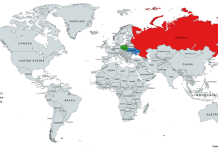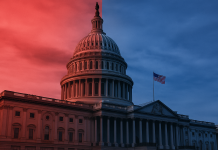
The Trump administration introduced another shift in its security approach to the Western Hemisphere this week, unveiling a broadened counter-drug and surveillance campaign known as Operation Southern Spear. Defense Secretary Pete Hegseth announced the initiative, describing it as a major expansion of U.S. operations targeting groups the government now classifies as narco-terrorist organizations. The move comes as the U.S. steadily increases its military footprint across the Caribbean, Central America, and waters approaching South America.
According to Hegseth, the effort will be overseen by Joint Task Force Southern Spear, a headquarters established in October to unify and accelerate U.S. counter-drug activities in coordination with U.S. Southern Command. In a post on X, he argued that Washington must take a more forward-leaning posture against drug-smuggling networks that he says contribute to widespread American casualties. “The Western Hemisphere is America’s neighborhood — and we will protect it,” Hegseth wrote.
The operation builds on a series of U.S. maritime engagements earlier this fall, during which American forces struck vessels allegedly tied to narcotics trafficking and armed groups connected to actors in Colombia and Venezuela. Since early September, roughly twenty such incidents have taken place in international waters in the Caribbean and eastern Pacific. U.S. officials say the encounters have resulted in about eighty deaths. While the Trump administration maintains the individuals killed were part of recently designated terrorist networks, lawmakers from both parties have questioned whether the White House has the legal authority to take lethal action at sea without specific congressional approval.
Meanwhile, Southern Command and Navy elements deployed across the region have spent the past year testing a range of unmanned systems — including long-duration surface drones, small high-speed robotic craft, and vertical-lift unmanned aircraft — designed to widen surveillance coverage and accelerate interdiction. Adm. Alvin Holsey, who is preparing to leave his role as SOUTHCOM commander, has said the new task-force structure is meant to compress decision timelines and help the U.S. and partner nations disrupt smuggling activity more effectively.
The American military presence in the Caribbean has grown rapidly. The aircraft carrier USS Gerald R. Ford, along with its strike group of more than 4,000 sailors and an embarked air wing, has moved into the larger Southern Command area and is now operating closer to Puerto Rican and Venezuelan waters. Destroyers, a guided-missile cruiser, amphibious ships carrying Marine aviation units, and specialized surveillance aircraft are also active in the region. The buildup has intensified debate over whether Washington is positioning itself for potential confrontation with Venezuelan President Nicolás Maduro, whose government U.S. officials have long labeled illegitimate.
Experts remain divided about Washington’s intentions. Some view the expanded posture as a way to pressure Maduro diplomatically, signaling that the United States is willing to escalate if necessary. Others caution that sustaining such a large military presence could create political momentum for further action. Brian Finucane of the International Crisis Group noted that, despite the tough rhetoric surrounding Southern Spear, President Trump has not publicly committed to authorizing strikes inside Venezuela and may still be weighing the risks of such a step.
Venezuela has responded with sweeping military drills, with officials in Caracas claiming that roughly 200,000 personnel from the armed forces and civilian militias are taking part. Maduro accuses Washington of fabricating a justification for intervention and denies U.S. allegations that his government plays a central role in narcotics trafficking.
As Operation Southern Spear begins, tensions across the region are rising. Conflicting U.S. and Venezuelan narratives about their intentions have left neighboring states and international observers uncertain about whether the situation will ease, intensify, or slide toward a wider confrontation.
This image is the property of The New Dispatch LLC and is not licenseable for external use without explicit written permission.







